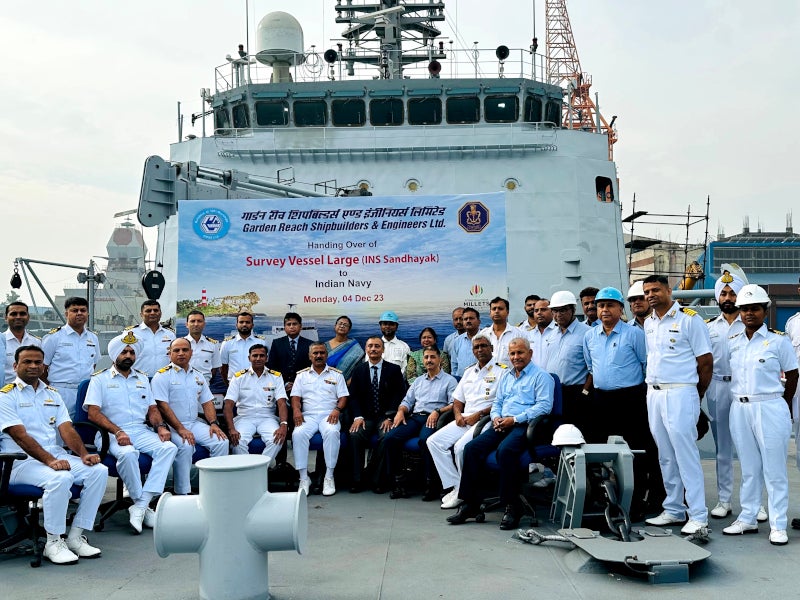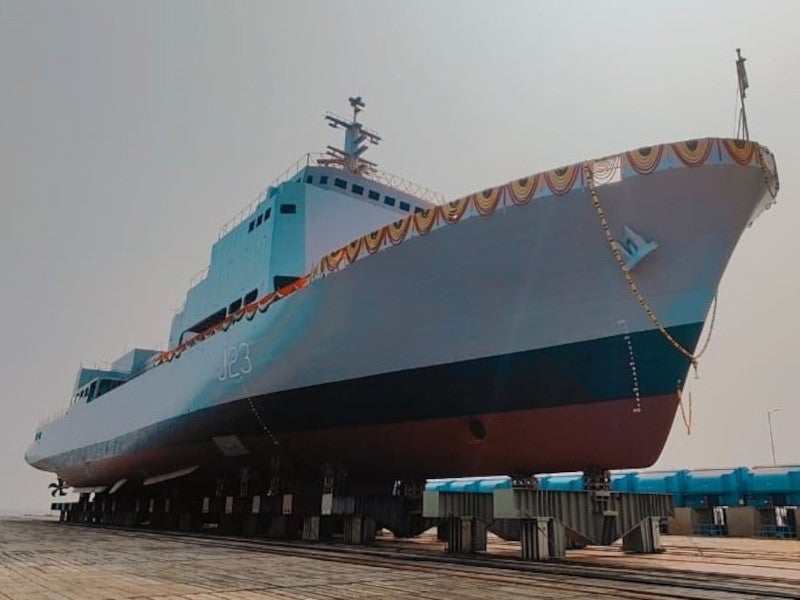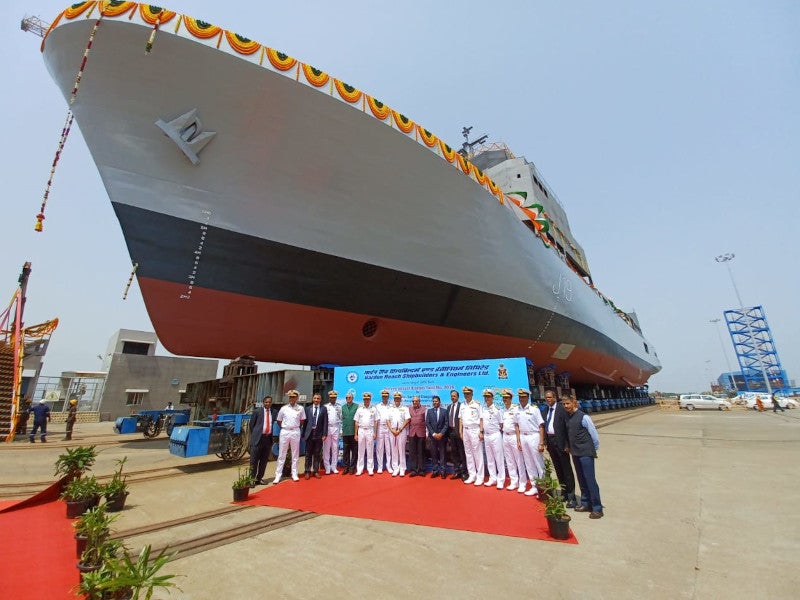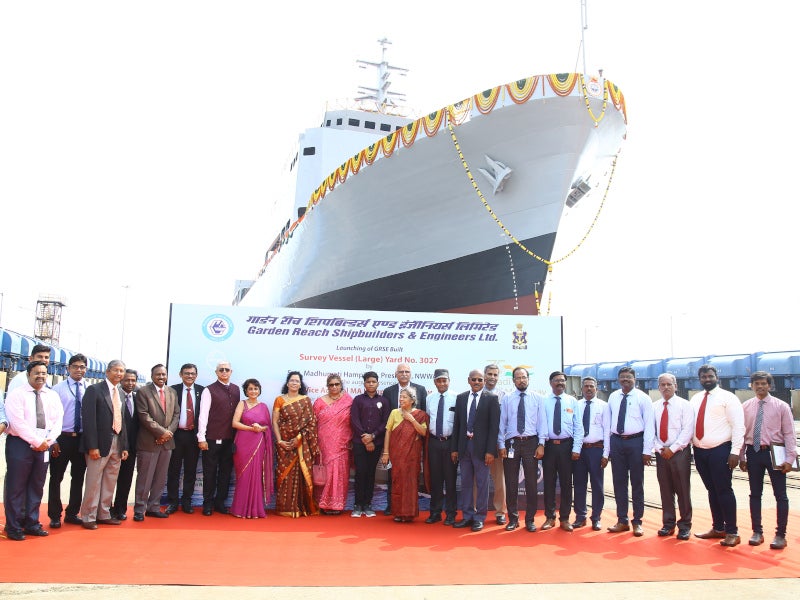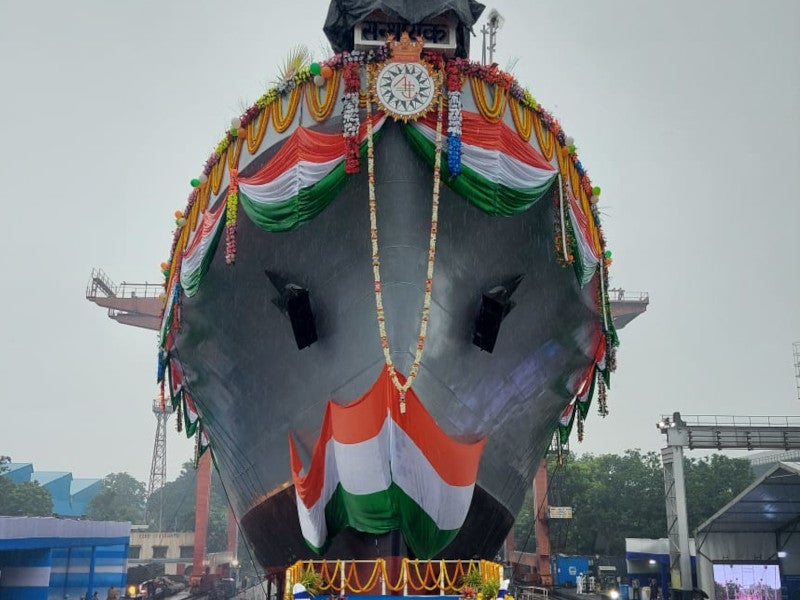The Sandhayak-class survey vessels large (SVLs) are four survey ships being built by Garden Reach Shipbuilders and Engineers (GRSE), a shipbuilding company based in India, for the Indian Navy.
The new vessels will replace the existing Sandhayak-class survey ships built in the 1980s.
INS Sandhayak (Yard 3025), the first vessel in the class, was commissioned into the Indian Navy in February 2024.
The other three vessels in the series are INS Nirdehsak, INS Ikshak and INS Sanshodhak.
Sandhayak-class survey vessels (large) development details
The Ministry of Defence (MoD) and GRSE signed a contract worth Rs24.35bn ($293.3m) for the construction of four SVL ships in October 2018. The ships are designed by GRSE and the Indian Navy’s Warship Design Bureau.
GRSE is also constructing the anti-submarine warfare shallow watercraft (ASW-SWC) ships and the Nilgiri-class (Project 17A) frigates for the Indian Navy.
The keel for the first ship in the class was laid down in March 2019 and the vessel was subsequently launched in December 2021.
The vessel completed an extensive series of tests both in port and out at sea and was handed over to the Indian Navy in December 2023.
More than 80% of the INS Sandhayak’s content by cost is indigenous.
The construction of the other three ships, up until the outfitting stage, is subcontracted to L&T Shipbuilding.
The keel for the second ship in the class, INS Nirdehsak (Yard 3026), was laid down in December 2020 and the vessel was launched in May 2022.
The keel for INS Ikshak (Yard 3027), the third ship, was laid down in August 2021 and the vessel was launched in November 2022.
The keel-laying ceremony for the fourth ship, INS Sanshodhak (Yard 3028), took place in June 2022 and the vessel was launched in June 2023.
Sandhayak-class SVL design and features
The Sandhayak-class survey vessels (large) are 110m long, 16m wide and have a displacement of 3,400t.
They have an endurance of 6,500 nautical miles and can accommodate more than 230 personnel.
The vessels are built to comply with the Indian Register of Shipping Classification Society’s regulations and adhere to the latest Marine Pollution Standards set by the International Maritime Organization.
The hull of the ships is built using DMR 249-A steel, produced by the Steel Authority of India (SAIL), using their indigenous manufacturing techniques.
Navigation and communication systems
The ships are fitted with advanced hydrographic equipment such as data acquisition and processing systems, Differential Global Positioning Systems long-range positioning systems, digital side scan sonar, and deep and shallow multi-beam echo sounders.
They are equipped with terrestrial survey equipment, autonomous underwater vehicles and remotely operated vehicles.
Each ship can also carry four survey motorboats and an integral helicopter.
It can be equipped with a foldable hangar to accommodate a utility helicopter for storage.
Propulsion
The Sandhayak-class ships are powered by two marine diesel engines, which are paired with fixed-pitch propellers. They can sail at a maximum speed of 18 knots.
Additionally, the ships are equipped with bow and stern thrusters to facilitate smooth manoeuvring at low speeds during surveys.
Sandhayak-class survey vessels applications
The main purpose of the Sandhayak-class survey vessels (large) is to conduct extensive hydrographic surveys of ports, harbours, coastal areas and deep seas, and the determination of navigational channels and routes. The ships will also collect oceanographic and geophysical data for defence and civil applications, and survey maritime limits.
The operational zone of the ships encompasses the maritime boundaries, including the Exclusive Economic Zone (EEZ) and extended continental shelf.
The ships will also have a secondary role in providing limited defence capabilities, supporting humanitarian assistance and disaster relief operations and serving as hospital ships in emergencies.

